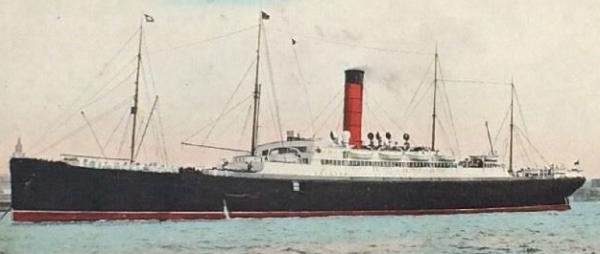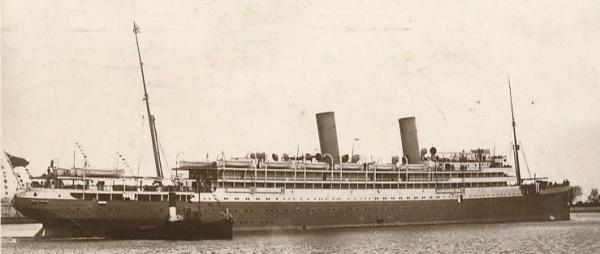The POW Ships at Southend on Sea
Once the war started in 1914 the numbers of German POW and internees grew with little existing capacity to securely hold these men.
The initial solution was prison ships with the Royal Edward, Saxonia and the Ivernia being moored at Southend on Sea Pier.
 Ivernia
Ivernia
The Ivernia was used from Soldiers with the other two being used for civilians.
The POW arrived in November 1914 by train and were marched via the pier to a tugboat which took them to the boats.
The men were guarded by the National Reserve of the Surrey Division.
700 more arrived in December 1914 , mainly infantrymen with a few Prussian Guards and some sailors saved from the Mainz. Local reports were that some were not more than boys while some were getting on in years.
Eventually the Ivernia was to hold 1575 Prisoners of War with the Saxonia 2300 and the Royal Edward 1200 Internees.
One prisoner 'went mad' and tried to escape through a porthole and so jump overboard. He was restrained and taken to custody at Colchester.
 Saxonia
Saxonia
At Christmas boxes arrived from friends of the detainees containing 100 tons mutton,100 barrels of beer, one tone apples, oranges and nuts, two and a half tons of tobacco and cigars, several Christmas trees and a large quantity of decorations.
On 27 January 1915, Lt Johann Meiser of the 13th Hussar Regiment, a German POW died from Ptomaine poisoning, said by the German POW Doctor Bernhardt Hestler, to have come from eating a sausage sent from a friend in Germany which has become poisonous during its long journey. He was buries with full military honours at the Roman Catholic Church, Southend on Sea in the presence of some of his colleagues from the Prison Ship.
 Royal Edward
Royal Edward
on 26 February 1915 four German prisoners interned in the Royal Edward were escorted to London at noon where they met four British women at a register office and were married. They then enjoyed a wedding breakfast before the men were escorted back to the ship at 3pm while the ladies returned to their homes. In all cased the couples were known to each other before the start of the war.
In April 1915 the Ships became subject of complaint about the volume of pollution on the foreshore from the ships. It was reported that the accumulation from the ships included cabbages, under vests, old boots, boot leather, parts of lemons, oranges & potatoes, cigarette packets, torn letters, rabbit skins and general litter.
The Germans obviously were unaware of the vessels use as in May 1915 a Zeppelin raid saw a bomb dropped that just missed the Royal Albert which was packed with German internees.
By the end of May 1915 the use of the ships was discontinued as accommodation had by now been built and the POW and internees were moved out.
The Royal Edward was taken into use as a troopship but was not to last long as it was torpedoed in the Aegean in August 1915 and sunk with heavy loss of life.


